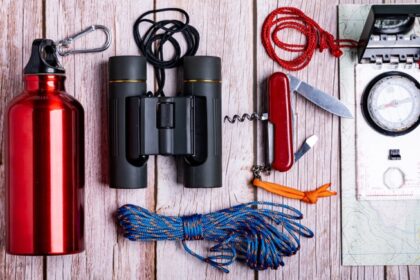The appeal of wild camping is simple to understand: sleeping beneath a starry sky, waking up to the smell of fresh air, and just getting away and forgetting about your concerns. This style of camping, also referred to as freedom camping, entails eschewing established campgrounds in favour of spending the night in a natural setting. It’s a very liberating and enjoyable hobby, but it’s not always as simple as it sounds. Keep in mind these crucial guidelines and think about visiting some of the top wild camping places across the world. Wild camping comes with ambiguous laws and regulations as well as several hurdles along the road.
Important Wild Camping Guidelines
Wild camping can be beautiful and unforgettable, but it can also be difficult and even hazardous if you’re unprepared. To ensure a relaxing journey, go by following guidelines:
1. Be knowledgeable of the rules
It always pays to conduct extensive research in advance before thinking about wild camping anywhere. Even in nations where camping in the outdoors is completely permitted, some regions could be off limits or you might unintentionally land up on private property. Make sure you complete your research because this could lead to penalties or other legal issues. For information on the best wild camping locations in the area, get in touch with local governments, browse the relevant government websites, speak with park rangers and other experts, or just ask the locals. You can ensure compliance with this.
2. Utilise technology
You might use a helpful tool like iOverlander or Campendium if you want to locate great locations while ensuring that wild camping is allowed. These apps will provide you a list of the top free and paid campsites in the area you choose, along with coordinates and other vital details. It could be a good idea to buy a GPS device as well in order to get to these locations securely and keep on course. In the bush, cell service can be intermittent, so a GPS gadget will help you stay on track and minimise the risks of becoming trapped in an unknown area.
3. Constantly be ready
When camping in the wilderness, it’s crucial to pack wisely and maintain readiness because nature frequently exhibits unpredictability. This entails making an investment in high-quality otf automatic knives that are strong and long-lasting enough to be used for everything from cooking to erecting tents. To that end, always make sure you have enough food and drink for the duration of your journey. Along with taking some kindle and firestarters for your campfires, packing an emergency shelter and extra layers of weather-resistant clothing can be extremely helpful. Additionally, first aid kits are crucial for emergencies.
Best Places for Wild Camping
The world is filled with breathtaking natural scenery, but due to regional rules and restrictions, wild camping may not be permitted everywhere. But here are some gorgeous places you can go:
North Cascades National Park, United States
Americans may have it the easiest because, unless otherwise noted, camping in the open in grasslands, national forests, and Bureau of Land Management properties is lawful in the US. Because of this, the most famous places, like Yellowstone, Yosemite, and Sequoia, frequently draw wild campers from all over the world. All of them are excellent choices, but the North Cascades National Park is the undiscovered treasure of the USA’s natural beauty. You could have a variety of unique experiences here, including observing alpine scenery, flowing rivers, pristine lakes, and limitless wildlife.
2. Norway’s Lofoten Islands
Wild camping is governed differently in almost every nation in Europe, but it is generally permitted in some forms and places. One of the nations where the public is allowed to travel at will, including wild camping, is Norway. Selecting a decent wild camping location is particularly challenging because to the legality and unquestionable beauty of the country’s natural landscape. However, tourists are frequently drawn to Norway’s unspoilt Lofoten Islands, which offer lovely beaches, accessible meadows, and fresh drinking water that comes straight from local streams.
3. the New Zealand beach of Medlands
New Zealand permits wild camping on public conservation property and also has more liberal regulations. Given that New Zealand offers magnificent natural surroundings in a variety of forms, from impressive towering mountains to peaceful sandy beaches, the same problem frequently emerges here as it does in Norway. One such area is the Medlands Beach in Oruawharo Bay, which frequently draws wild campers. This location is best suited for experienced campers because it is completely off-grid and off the beaten path. But Medlands is also a remote white sand beach with stunning scenery and great surf swells, which may account for its appeal to wild campers.
No matter where you choose to wild camp, always keep in mind that being well-informed and prepared is essential. In order to properly appreciate the outdoors, you must, above all, leave no trace everywhere you go.





